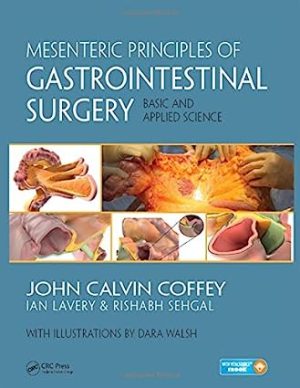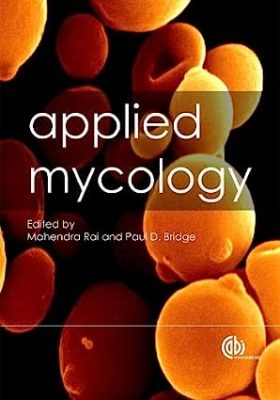Clinical Neuroanatomy, 28th Edition
Clinical Neuroanatomy, 28th Edition
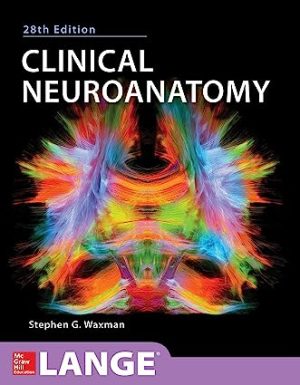
A concise, highly visual overview of neuroanatomy and its functional underpinnings
Clinical Neuroanatomy, Twenty-Eighth Edition offers an accessible, easy-to-remember synopsis of neuroanatomy and its functional and clinical implications. Since many of us learn and remember better when material is presented visually, this acclaimed resource includes not only clinical material such as brain scans and pathological specimens, but also hundreds of diagrams and tables that are designed to be clear and memorable.
Here’s why Clinical Neuroanatomy is essential for board review or as a clinical refresher:
• NEW SECTION summarizes the most important take-away lessons from each chapter
• More than 300 full-color illustrations
• A unique chapter on Introduction to Clinical Thinking puts neuroanatomy in clear clinical perspective
• Numerous CT and MRI scans
• Block diagrams illustrate actions of each muscle (essential for the clinical motor examination)
• Hundreds of diagrams and tables encapsulate important information
• Essentials for the Clinical Neuroanatomist list appears in each chapter
• Clear and memorable root-by-root and nerve-by-nerve illustrations of sensory areas and muscle intervention
• Coverage of the basic structure and function of the brain, spinal cord, and peripheral nerves as well as clinical presentations of disease processes involving specific structures
• Emphasizes must-know concepts, facts, and structures
• Appendices include The Neurologic Examination, Testing Muscle Function, Spinal Nerves and Plexuses, and Questions and Answers
• Case studies demonstrate how concepts apply to real-world situations
If your practice or education would benefit from an engagingly written, well-illustrated overview of neuroanatomy and its functional underpinnings, this trusted resource belongs on your desk.
Pediatric Cardiology: The Essential Pocket Guide 3rd Edition
Pediatric Cardiology: The Essential Pocket Guide 3rd Edition
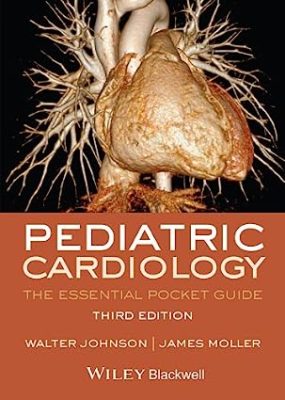
Caring for children with heart disease is extremely complex, requiring a different and often tailor-made approach compared with adults with similar cardiac problems.
Built on the success of previous editions and brought to you by a stellar author team, Pediatric Cardiology: The Essential Pocket Guide provides a unique, concise and extremely practical overview of heart disease in children.
From history-taking, physical examination, ECG, and chest X-ray – the basics that enable clinicians to uncover possible problems and eliminate areas of false concern – it goes on to examine the range of more complex topics in the diagnosis and treatment/management of childhood cardiovascular disease.
New to this edition you’ll find:
- An enhanced section on imaging including recent advances in cardiac MRI and fetal echocardiography.
- New techniques in genetic testing for heart disease in special populations.
- Much more emphasis on the importance of echocardiography in understanding the pathophysiology of congenital cardiac malformations.
- Expanded section on cardiac conditions in the neonate, specifically on prenatal diagnosis and management, neonatal screening for congenital heart disease, and hypoplastic left heart syndrome.
- Expanded and updated congestive cardiac failure section, including the latest in genetic and metabolic causes of heart failure, and medical/surgical treatment options; discussion of bridging therapies; essentials of transplantation, including common drug treatment regimens, clinical recognition of treatment complications and rejection, outcomes, morbidity and survival.
In addition, every chapter is fully updated with the very latest clinical guidelines and management options from the AHA, ACC and ESC.
Pediatric Cardiology: The Essential Pocket Guide, 3rd edition, is quite simply a must-have guide for all members of the multidisciplinary team managing children suffering from heart disease.
Virus as Populations: Composition, Complexity, Quasispecies, Dynamics, and Biological Implications 2nd Edition
Virus as Populations: Composition, Complexity, Quasispecies, Dynamics, and Biological Implications 2nd Edition

Virus as Composition, Complexity, Quasispecies, Dynamics, and Biological Implications, Second Edition, explains the fundamental concepts surrounding viruses as complex populations during replication in infected hosts. Fundamental phenomena in virus behavior, such as adaptation to changing environments, capacity to produce disease, and the probability to be transmitted or respond to treatment all depend on virus population numbers. Concepts such as quasispecies dynamics, mutations rates, viral fitness, the effect of bottleneck events, population numbers in virus transmission and disease emergence, and new antiviral strategies are included.
The book’s main concepts are framed by recent observations on general virus diversity derived from metagenomic studies and current views on the origin and role of viruses in the evolution of the biosphere.
- Features current views on key steps in the origin of life and origins of viruses
- Includes examples relating ancestral features of viruses with their current adaptive capacity
- Explains complex phenomena in an organized and coherent fashion that is easy to comprehend and enjoyable to read
- Considers quasispecies as a framework to understand virus adaptability and disease processes
Anatomy and Physiology Coloring Workbook: A Complete Study Guide, Global Edition
Anatomy and Physiology Coloring Workbook: A Complete Study Guide, Global Edition
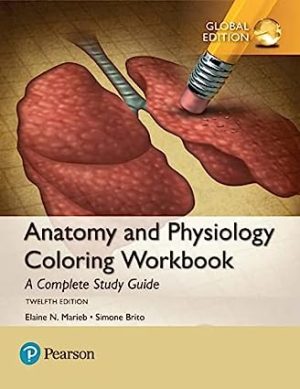
Fundamental Medical Mycology 1st Edition
Fundamental Medical Mycology 1st Edition
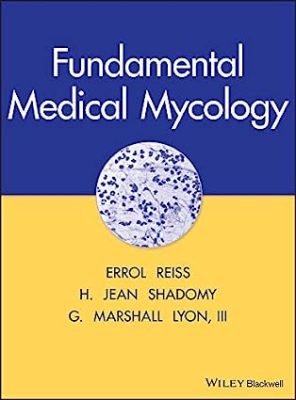
Medical mycology deals with those infections in humans, and animals resulting from pathogenic fungi. As a separate discipline, the concepts, methods, diagnosis, and treatment of fungal diseases of humans are specific. Incorporating the very latest information concerning this area of vital interest to research and clinical microbiologists,Fundamental Medical Mycology balances clinical and laboratory knowledge to provide clinical laboratory scientists, medical students, interns, residents, and fellows with in-depth coverage of each fungal disease and its etiologic agents from both the laboratory and clinical perspective. Richly illustrated throughout, the book includes numerous case presentations.
Applied Mycology First Edition
Applied Mycology brings together a range of contributions, highlighting the diverse nature of current research. Chapters include discussions of fungal associations in the environment, agriculture and forestry, long established and novel applications of fungi in fermentation, the use of fungi in the pharmaceutical industry, the growing recognition of fungal infections, current interests in the use fungal enzymes in biotechnology and the new and emerging field of myconanotechnology. Demonstrating the broad coverage and importance of mycological research, this book will be of interest to researchers and students in all biological sciences.
Medical Mycology: Current Trends and Future Prospects 1st Edition
Medical Mycology: Current Trends and Future Prospects 1st Edition
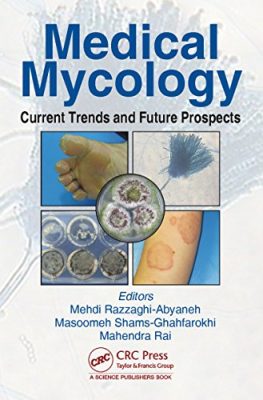
Jones’ Clinical Paediatric Surgery 7th Edition
Jones’ Clinical Paediatric Surgery 7th Edition

JONES’ CLINICAL PAEDIATRIC SURGERY
Jones’ Clinical Paediatric Surgery provides clear-sighted advice on the surgical options available for young patients.
Building on the popular and successful style of previous editions, this fully revised seventh edition employs a systematic approach to the childhood diseases that need surgical treatment. It includes more case vignettes and colour photographs, expanded coverage on the use of imaging, and updated approaches to management including laparoscopic operations. Key subject areas are supported by case vignettes in a familiar format similar to what might appear in an OSCE viva.
Jones’ Clinical Paediatric Surgery is the ideal guide for paeditricians, surgeons and trainees, as well as primary care physicians, junior doctors and medical students.
Pediatric Otolaryngology First Edition
Pediatric Otolaryngology First Edition
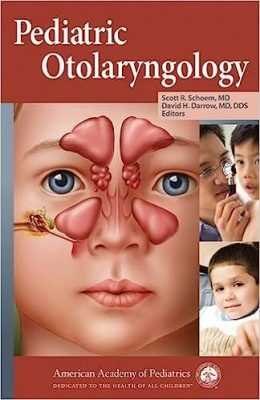
Otolaryngologic disorders account for a large share pediatric visits. And now there’s an ENT ready-reference created expressly for pediatric primary care providers. The all-new Pediatric Otolaryngology is the first place to turn for expert help with the myriad ear, nose, and throat disorders you’re seeing every day.
From adenopathy to ankyloglossia…ear infection to epistaxis…stridor to speech disorders, look here for the state of the art across the length and breadth of pediatric ENT.
Speed and simplify primary care decision-making
Pediatric Otolaryngology delivers the precise level of detail primary care providers require. The book’s practice-focused, case-based presentation streamlines patient problem-solving. “How to” clinical pearls help you master key diagnosis and treatment procedures.
Contributions from pediatric otolaryngolists with wide patient management experience make this a resource you’ll use with complete confidence.
Contents include:
– Neonatal hearing screening
– Treatment for hearing loss
– Treatment and complications of otitis media
– Facial nerve paralysis
– Disorders of the pinna and external ear canal
– Nasal obstruction of infancy
– Rhinosinusitis
– Eistaxis
– Nasal and facial fractures
– Tonsils and adenoids
– Oropharyngeal trauma
– Ankyloglossia and cleft palate
– Neck and mass adenopathy
– Deep neck abscesses
– Salivary gland disorders
– Stridor in infants and children
– Speech and voice disorders
– Drooling and aspiration
– Chronic cough
– Aerodigestive tract foreign bodies
– ENT manifestations of gastroesophageal disease
– ENT disorders in Down syndrome
– Vascular malformations of the head and neck









